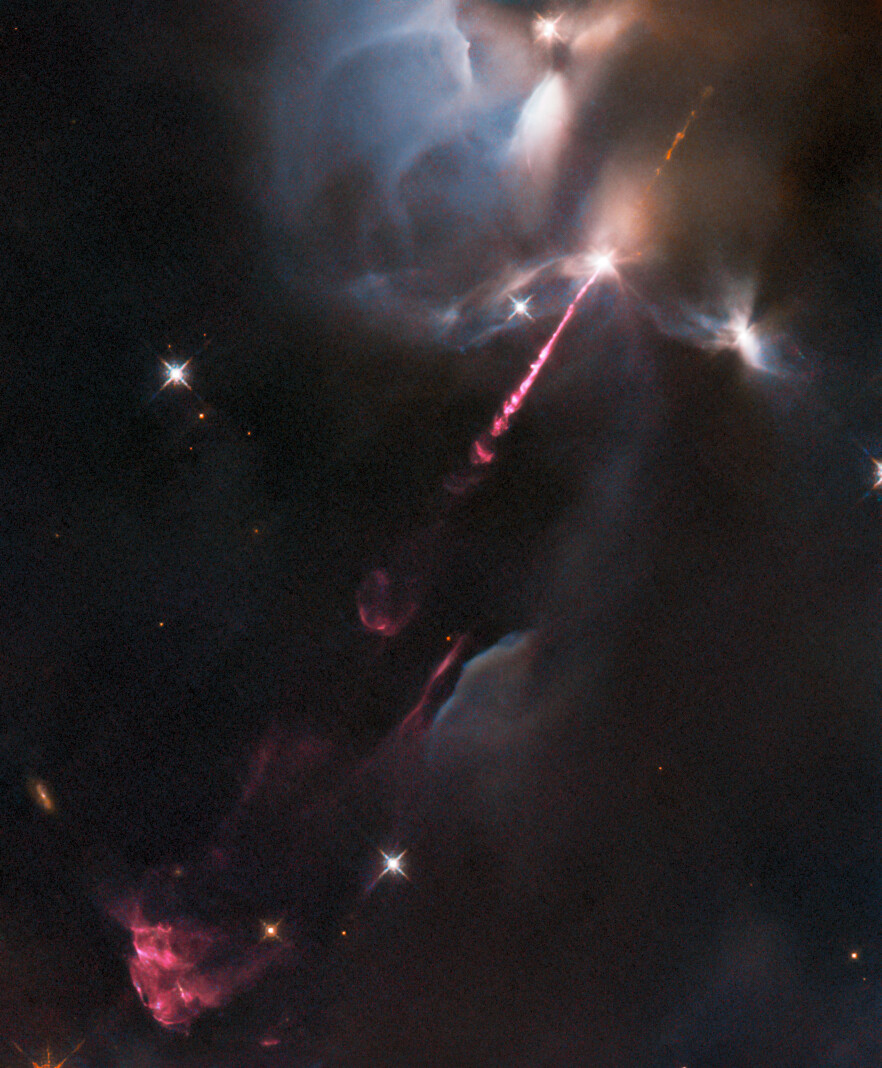The presented image was published by the Hubble Mission support team. It captures a stream of high-energy plasma extending several light-years. The stream is produced by the young star HH34, located at a distance of 1,250 light-years from Earth in the Orion Nebula.

Astronomers name such formations as Herbig–Haro objects. Their appearance is a result of the interaction of newborn stars with the material of the protoplanetary disks surrounding them. It leads to the formation of jets consisting of ionized gas. In the process of moving, they collide with interstellar material, which leads to the appearance of shock waves that heat the material, causing it to glow. As a result, characteristic wispy structures are formed, they can be seen in the Hubble image.
It should be noted that Herbig–Haro objects are a very short-term phenomenon by astronomical standards. Just a few tens of thousands of years after their origin, they completely dissipate in interstellar space.
The photographed Hubble jet is located in the Orion Nebula, one of the largest areas of active star formation closest to Earth. Earlier we published images of this region taken by the Hubble telescope.
According to https://esahubble.org

